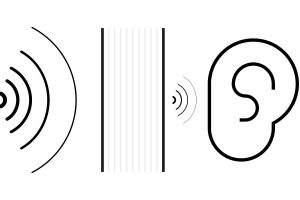Introduction
Concrete is almost always used as structural elements in various designs. Concrete goes through a curing process which can frequently be difficult to manage given construction schedules, weather conditions, and more factors. The curing process is critical to maintaining concrete strength as engineered, and therefore there is quite a range for what an engineered and poured concrete could actually end up in terms of executed PSI strength.
Strength and Consistency Test
Therefore, throughout the process of pouring concrete, there are various ways to ensure that the concrete has been mixed properly, has the right consistency, and ultimately can tell information about the concrete strength that was poured. For many codes, depending on the amount of concrete poured in the project, these tests may be required with documentation submitted to the reviewers.
Different Tests
Slump Test – Measures consistency
Usually performed at the job site. Concrete is placed in a 12” high truncated cone, 8” at the base and 4” at the top. It is compacted into the cone and then the cone is removed and the slump is recorded.
- Too much slump indicates excessive water in the mix
- Small slump indicates that the mixture will be difficult to place properly
- This is sort of a ‘this porridge is too hot, this one is too cold, this one is just right’ type of test.
Cylinder Test – Measures compressive strength
As concrete is placed, samples are put in cylinder molds of 6” diameter and 12” high. The cylinders are sent to a laboratory and they are tested under specific conditions.
- Compressive strength is calculated and compared with values used to design the structure.
- Typically tested at 7 and 28 days.
- 7 day tests should be 60-70% of the 28 day strength test typically
- 28 days should be near or at full strength
Core Cylinder Test – Measures compressive strength when the building is already placed
A portion of the poured building concrete is core drilled out. This core is then delivered to a laboratory similar to the “cylinder test” process.
Kelly Ball Test (Ball Penetration Test)
A hemispheric mass of steel with a calibrated stem is dropped onto a slab of freshly laid concrete. The amount of penetration is recorded and compared to one-half of the slump test.
Impact Hammer Test – Tests compressive strength
Non destructive way to test compressive strength after it is hardened. Spring loaded plunger snaps against a concrete surface, the amount rebounded is measured. The amount of rebound gives an approximate reading of the concrete strength. This is beneficial as its less labor intensive and a core/sampling isn’t needed. Results are immediate.
K-Slump Test – Measures consistency
¾” tube which contains a scale. The tube is placed on the wet concrete and the scale is pushed into the mixture and released. The distance the scale floats out directly measures the consistency of the concrete.
Moisture Content & Tests
Once the concrete has hardened and formwork is taken down, crews will generally want to get started on the interior fit out as soon as possible. However, moisture in a slab can be a problem, especially in certain locations like slab on grade. The flooring industry recommends certain finishes not installed until moisture content reaches a certain level, and there are various tests to help determine the moisture in a slab at any point in time.
Moisture Tests
Calcium Chloride Test (Moisture Dome Test)
One of the most common moisture tests for concrete because it’s inexpensive and easy to complete.
Test is performed by placing a standard mass of calcium chloride below a plastic cover and sealing it to the floor. After 60-72 hours, the mass is weighed and compared to its previous weight. There is a mathematical formula that will tell you the moisture the calcium chloride has absorbed. One test for every 500 to 1000 SF.
Hygrometer Test (Relative Humidity Test)
Determine the moisture emission by measuring relative humidity.
A pocket of air is trapped below a vapor impermeable box, and a probe in the box measures the relative humidity.
Polyethylene Sheet Test
Uses an 18” x 18” sheet of plastic to the floor to trap the excess moisture. After a minimum of 16 hours, a visual inspection is made of the sheet and the floor. The presence of visible water indicates the concrete is insufficiently dry for the application of finishes. There should be no moisture present.
Mat Test
Uses a 24” x 24” sample of vapor retardant floor finish. The sample is applied with adhesive and the edges sealed with tape. After 72 hours a visual inspection is made. If the mat is firmly bonded or removal of the mat is difficult, the level of moisture present is considered to be sufficiently low enough for the installation of the material. Kind of silly, but this is a real test that you can do.
Electrical Impedance Test
Uses a proprietary method to determine the moisture content by measuring electrical conductance and capacitance.
Alkalinity In Slabs
In addition to testing for moisture, the slab should be tested for pH level and alkalinity. Alkalinity is the ability of water to resist acidification and maintain a stable pH level. It’s a measure of the concentration of ions in water that neutralize hydrogen ions.
- Concrete normally has a pH of about 12.0 to 13.3
- Ideally the pH will be closer to 8.5 for flooring installation, this is the limit that concrete can achieve, and 9.0 is acceptable.
Although pH level is an indication of the presence of alkalinity, pH level and alkalinity are not synonymous. Two slabs can have the same pH level but different alkalinity. This is because alkalinity cannot exist without moisture.






Leave a Reply
You must be logged in to post a comment.